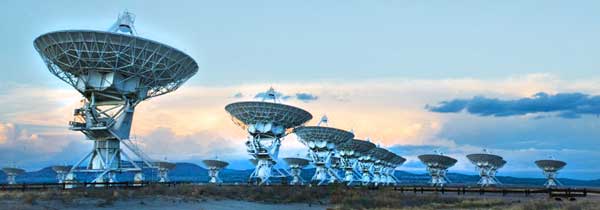Very Large Array Open House
October 31st, 2012
The VLA or Very Large Array (recently renamed the Karl G. Jansky Very Large Array) is a radio astronomy observatory comprised of 27 dish shaped antennas arranged in a Y configuration which can be as small as 3000 feet across or as large as 13 miles depending upon the resolution of the imaging desired and the wavelengths of radio waves to be studied. The observatory is located at just under 7,000 ft altitude on the Plains of San Agustin, near the town of Magdalena, about 50 miles west of Socorro, New Mexico. The configuration of the array can be changed using a special rail car to move each antenna to one of many pre determined mounting sites along the Y shaped tracks. Once all the dishes are bolted down on their concrete mounts, the fiber optic connections are hooked up, and the array is back in business.
The observatory is a part of the National Radio Astronomy Observatory (NRAO), and not only acts as a standalone facility, but also as a part of the Very Long Baseline Array, which is a group of ten 25 meter dishes located between Hawaii and the US Virgin Islands. Working together they act as a single huge radio telescope. Since running thousands of miles of fiber optic cable to hardwire them all to a central processor is impractical, each dish in the VLBA records its data to a hard disk drive. The data is time stamped using an atomic clock to allow for synchronization back at the NRAO Operations Center in Socorro, NM.
The staff was eager to share their passion for science during a recent open house tour of their facility. Things have changed there since the movie “Contact” was filmed. Astronomers need not visit the observatory in person. Their observations are scheduled, run and stored semi automatically by staff, and can be downloaded via the internet.
One question we asked was whether the signal would degrade if snow collected in the dishes, kind of like what happens with my Dish Network Satellite TV receiver. The answer was yes, it would. Their fix is to tilt the dishes vertically, and kind of shake them to knock off the snow. There are also heating elements present to help melt the snow. You never know unless you ask….

